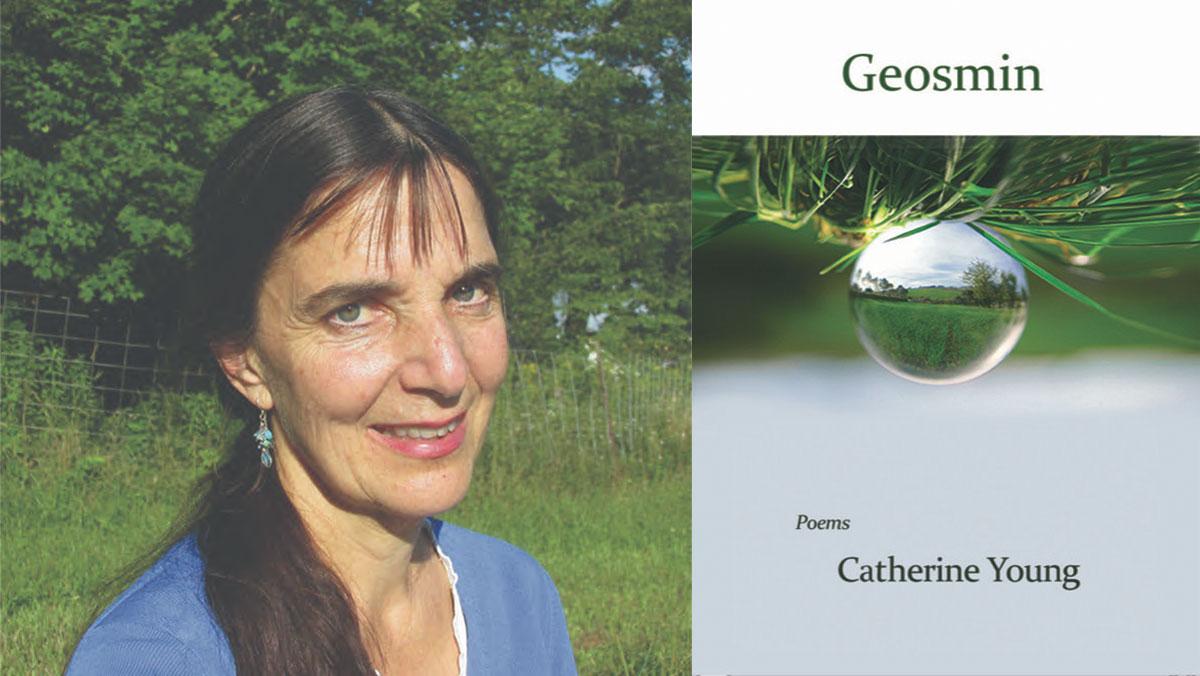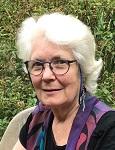Unflinching in their catalogue of environmental loss, the poems in Catherine Young's fine collection, Geosmin, are generous in their celebration of natural life in Wisconsin’s Driftless Area, where the poet lives and farms. She brings her love of place and her knowledge of environmental science to her writing. “In Dark Times We Gather Light,” the title of one of the poems, might well be the message of the book.
In these poems she shares her concern for the history of the soil and the green world as climate change arrives. Her love of language rings throughout—celebrating words like nectar, catkin, otter, and what we lose in losing them and their living objects—as in the poem “Gathering Acorns, Hoarding Words.”
If children
do not know acorn,
how will they play in fall
with the scaly cupule of nut on a finger for a hat,
or plant oak trees
that will outlive them?
The book consists of four sections (Elements, Almanac, Heartbreak and Beauty, Of Origins and Aging), distinguished by geologic time-scale, recurring events, personal response to landscape, and life story. In the first section, the speaker in the title poem, “Geosmin,” (from the Greek ge¯-: earth, and osme¯´: odor) describes the smell of earth as “slightly sweet, a kind of jasmine, / with a hint of spice…Like the smell of beets, some say.” But she has a more serious point in mind: “Geosmin, essential perfume, leads us to water / when drought and famine are over.”
Poems in the Almanac section recount briefer seasons—fireflies, midsummer’s flowering of the basswood tree, July’s 4-H parade, collecting elderberries, and harvest—as the “last fresh apples and red cabbages / fill the fridge in pails. “Winter-Laced Lovesong” uses the metaphor of the snowshoe to tell her love “I will bear you through the fiercest storm”—no small promise in Wisconsin.
The poems acknowledge the sadness that many of us experience on winter days—and also celebrate the beauty of a “clear sky, / sun-drenched snow / where my tracks / across the new year’s field / pool blue,” and the redemptive arrival of a Wisconsin spring that brings the running of sugar maple sap and red-winged blackbirds.
In the long poem, “In Dark Times We Gather Light,” the speaker describes the work of gathering honey in childhood, mourns the bees that emerged too early to survive in capricious spring weather, and reflects, “Maybe I wish / to be nectar droplets…the honeyed smear of blooming life.” Though later, in “Passerine” she concludes:
When my time is over, if I were to choose,
(I’ve told my children)
in the next life I would be
a swallow,
swoop from sky to ground.
This is a collection of poetry from a poet coming into her own, one who has gathered light in these dark times, making her own swoops from sky to ground and back again, in celebration of the inimitable landscape of Wisconsin’s Driftless Area.




